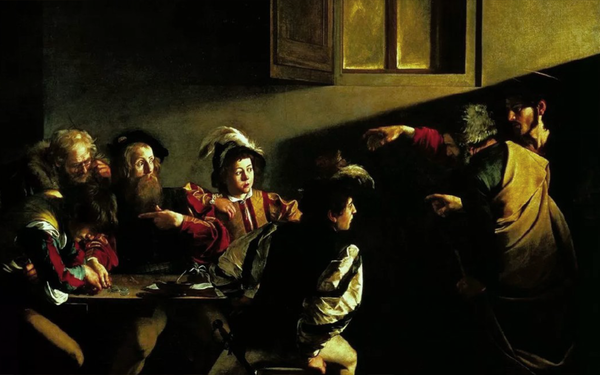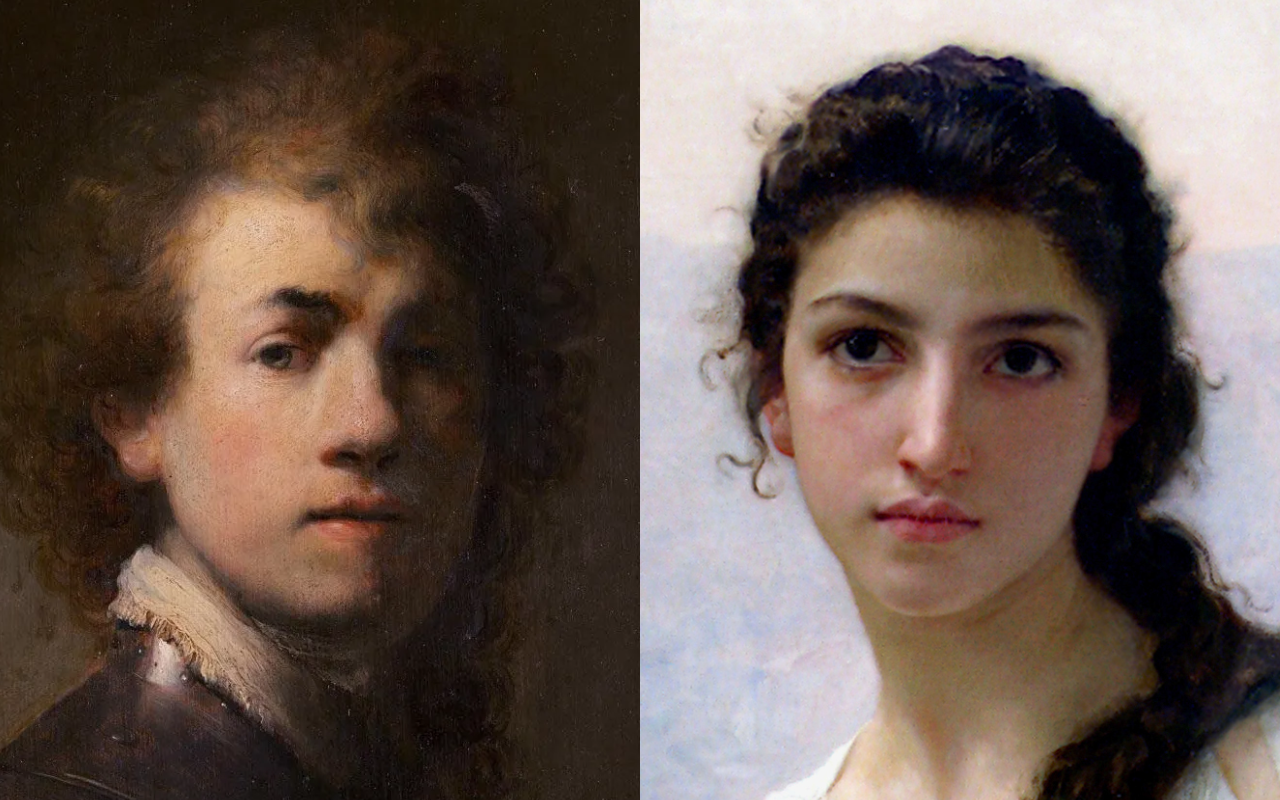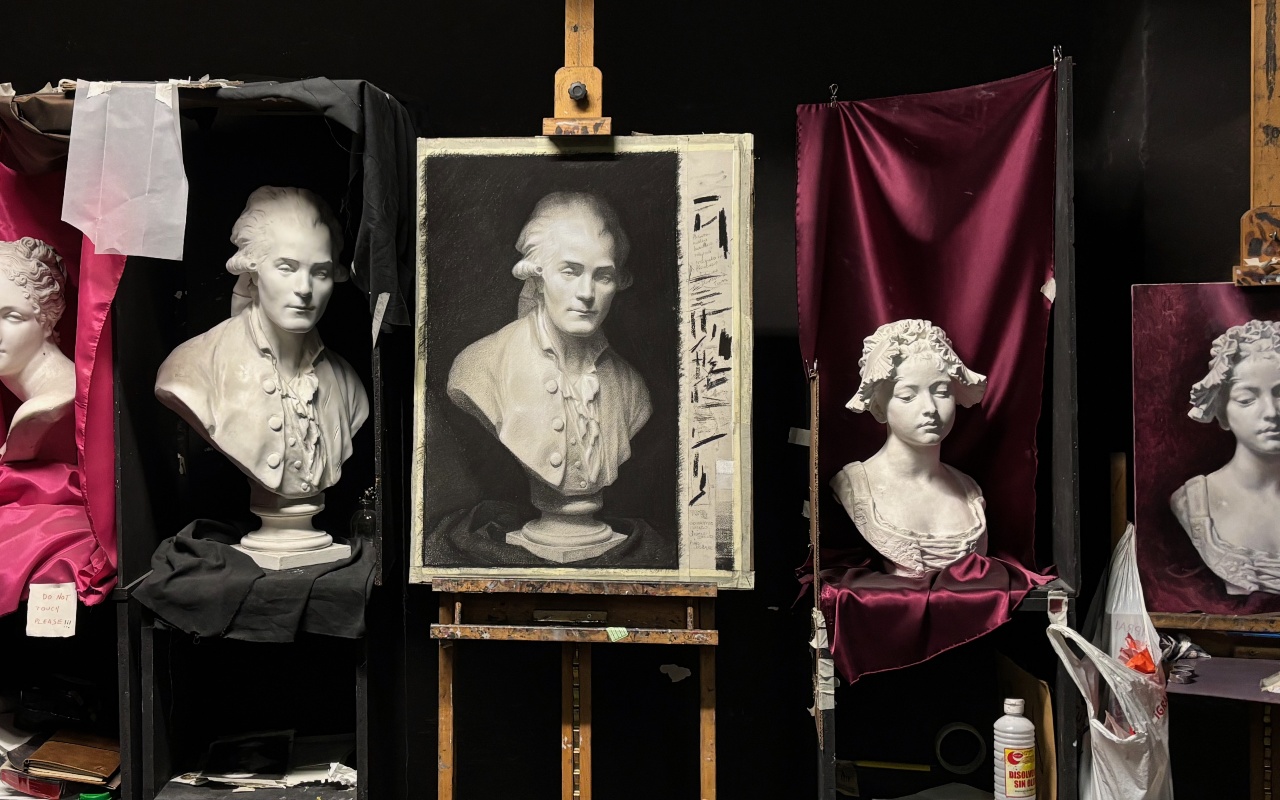
The Power and Art of Chiaroscuro
Chiaroscuro, derived from the Italian words "chiaro" (light) and "scuro" (dark), is a fundamental artistic technique that employs strong contrasts between light and shadow to create dramatic visual effects. This technique emerged during the Renaissance, with artists like Leonardo da Vinci experimenting with it in his sketches. However, it reached its pinnacle during the Baroque period, where masters like Caravaggio and Rembrandt used it to create works of extraordinary dramatic power.
Chiaroscuro isn't just about making things look dramatic – it's a sophisticated tool that serves multiple artistic purposes:
- Emotional Impact – Strong contrasts between light and shadow naturally create drama and mystery. This technique can evoke powerful psychological responses, making it particularly effective for portraiture and narrative scenes. The deep shadows can symbolize the unknown or the mysterious, while areas of light can represent revelation or truth.
- Compositional Control – Light and shadow patterns create strong abstract shapes that can guide your composition. These shapes often work on a subconscious level, leading the viewer's eye through the painting exactly as the artist intends. The contrast between light and dark areas can create focal points that immediately draw attention to important elements of the piece.
- Enhanced Depth and Atmosphere – One of the most powerful aspects of chiaroscuro is its ability to create the illusion of three-dimensional form on a flat surface. Where shadows meet light, edges can be softened or "lost," creating a sense of atmospheric depth that's difficult to achieve through other means.
The Science of Light and Shadow
Understanding how light works is crucial for mastering chiaroscuro, particularly the interplay between direct and indirect light. Direct light travels straight from its source to the subject, creating the brightest illumination and most dramatic shadows. This direct illumination follows predictable rules, falling off at consistent angles and creating clear patterns of light and shadow that help define form.
The boundary where direct light transitions into shadow, known as the shadow edge (or the "terminator" or "bedbug line"), is particularly crucial for artists. This line isn't merely a border – it's where the fundamental character of the light changes. On one side, we have the predictable, form-revealing effects of direct light. On the other, we enter the more subtle world of indirect light, which comprises both ambient light filling the general space and reflected light bouncing off nearby surfaces into the shadows.
In creating powerful chiaroscuro effects, we treat these two zones quite differently. The directly lit areas can contain a full range of values, showing subtle variations in form and surface quality. However, in the shadow areas, we deliberately minimize the influence of indirect light, creating what's known as shadow compression. This means we keep the range of dark values very narrow, with less variation than we might see in reality. This compression of shadow values serves two purposes: it creates the dramatic dark-light contrasts characteristic of chiaroscuro, and it allows us to use a wider range of values in the light areas, where we can model form more dramatically.
This deliberate manipulation of how we render direct and indirect light – rather than simply copying what we see – is what gives chiaroscuro its power. By understanding and controlling these different types of light, artists can create works that go beyond mere representation to achieve powerful emotional and dramatic effects.
A Tale of Two Paintings
Let's examine how two masters approached light and shadow with fundamentally different intentions:

Rembrandt's Self-Portrait in a Gorget is a masterclass in chiaroscuro technique. By minimizing ambient light, Rembrandt creates those characteristic compressed shadow values we discussed earlier, where the majority of the portrait is enveloped in rich, dark tones. The terminator line is especially pronounced, creating a dramatic transition from light to shadow across his face. This manipulation of light doesn't just create visual drama – it serves to direct our attention precisely where Rembrandt intended, with the highlighted areas of his face emerging from darkness to command our focus. The three-dimensional modeling of form is achieved almost entirely through this careful control of the light-shadow relationship.
In contrast, Bouguereau's Meditation demonstrates a different approach altogether, one that deliberately avoids strong chiaroscuro effects. Here, abundant ambient light fills the scene, creating soft, gradual transitions between light and shadow. The shadow areas contain considerable detail and tonal variation, without the value compression we see in Rembrandt's work. While Bouguereau certainly understands and uses light and shadow, his goal is to create a gentler, more contemplative mood where forms are fully revealed rather than partially concealed. This perfectly suits his subject matter, just as Rembrandt's dramatic lighting serves his psychological portraiture.
Tips for Using Chiaroscuro in Your Own Work
Setup
- Use a single light source.
- Remove or cover surfaces near your subject that might reflect light into the shadows.
- If photographing, shoot in a darkened room to minimize ambient light and use manual camera settings to prevent automatic exposure compensation.
- Use black cardboard or fabric to block unwanted ambient and reflected light.
- Consider building a shadow box to precisely control the lighting in your setup.

General Shading Tips
- When creating your block-in drawing, mark both contours and the terminator line to clearly identify where direct light transitions into indirect light. This allows you to adjust value relationships to enhance the chiaroscuro effect, making shadows deeper than they appear in your setup.
- Compress your shadow values while maintaining a clear distinction between light and shadow areas. Keep reflected and ambient light in your shadows subtle and low-contrast – these should support your main light source rather than compete with it.
- Simplify shadow areas by avoiding detail and sharp edges within them. This allows shadows to softly merge with the background, creating a powerful sense of depth.
Conclusion
Remember, chiaroscuro isn't just about making things look dramatic – it's about understanding and controlling light to create powerful, engaging artwork. With practice and attention to these principles, you can use this technique to create works with genuine visual impact and emotional depth.
About The Realist Painter
At The Realist Painter, we believe that with the right knowledge and guidance, anyone can master the art of painting realism.
In just a few immersive days, our workshops condense years of classical training into a highly focused learning experience. By blending rigorous theory with immediate, hands-on application, you gain high-level artistic education in a compact format—making it accessible for those who cannot commit to extended study.
Join us as we dive deeper into the fascinating relationship between light, color, and form, showing you how to observe, understand, and arrange tonal values and color for incredible depth. You’ll also learn proven strategies to improve your drawing skills, master color theory and mixing, and gain essential knowledge about pigments, surfaces, and mediums. Our goal is to provide everything you need to create paintings that surprise and delight you, taking your art further than you ever thought possible.
Carl de Jager
therealistpainter.com